One distinctive feature of sign languages is the extensive use of space at different grammatical levels. In this module, we will look at how different types of verbs interact with the use of space. Padden (1988) proposes that verbs in ASL fall into three types: agreement verbs, spatial verbs and plain verbs.
Agreement verbs
Agreement verbs can encode the syntactic role of the arguments (i.e., subject, object, etc.), as well as their person (i.e., 1st, 2nd or 3rd) and number features (i.e., singular, plural, etc.). They typically denote transfer events. Similar to many other sign languages, GIVE in HKSL is an agreement verb.
Figure 1 shows GIVE in its citation form, with a short forward path movement starting from a location near the signer’s body. The citation form is the form used when the sign is produced in isolation and this form is what gets listed in a dictionary. The movement path of GIVE can be modified to indicate the subject (i.e., the person who gives) and the indirect object (i.e., the recipient). Figure 2 shows GIVE being modified for 1st person singular subject (i.e., I) , and 2nd person singular indirect object (i.e., you), meaning, ‘I give you’. Figure 3 shows ‘I give him/her’, and Figure 4 means ‘He/She gives him/her’.
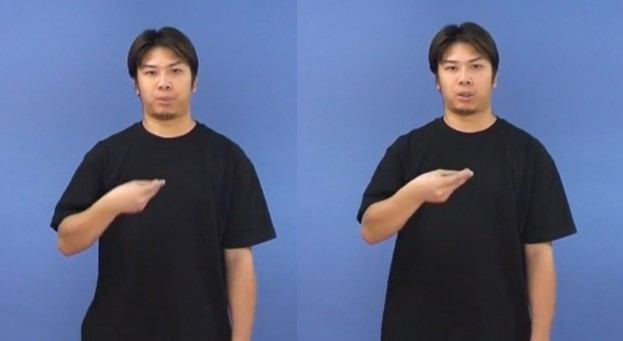
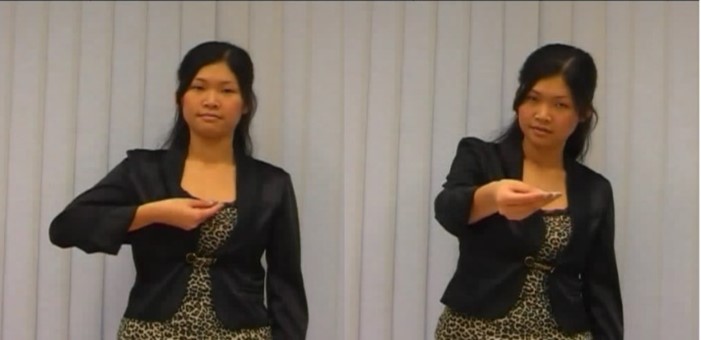
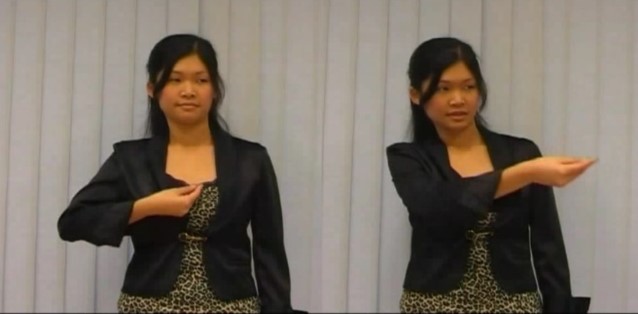

Padden proposes that this kind of movement modification is similar to verb agreement in spoken languages.1 In GIVE, the movement begins at the assumed location of the subject referent, and is directed towards the location of the object (i.e., indirect object). Some agreement verbs show subject and verb agreements by changing the orientation of the palm only. Figure 5 shows the citation form of EXPLAIN in HKSL. Figure 6 shows the meaning ‘I explain to him/her’, with the palm oriented towards the 3rd person object and the back of the hand facing the 1st person subject. Figure 7 shows the meaning ‘He/She explains to me’, with the palm oriented towards the 1st person object and the back of the hand facing the 3rd person subject.
[1] Whether movement modifications with verbs like GIVE is a manifestation of verb agreement is controversial in the literature. Some researchers propose to combine agreement verbs and spatial verbs as one single class (e.g., de Quadros & Quer 2008). For a review of the controversies involved, and some of the alternative analyses, readers can read Unit 7 of Pfau et al. (2012).
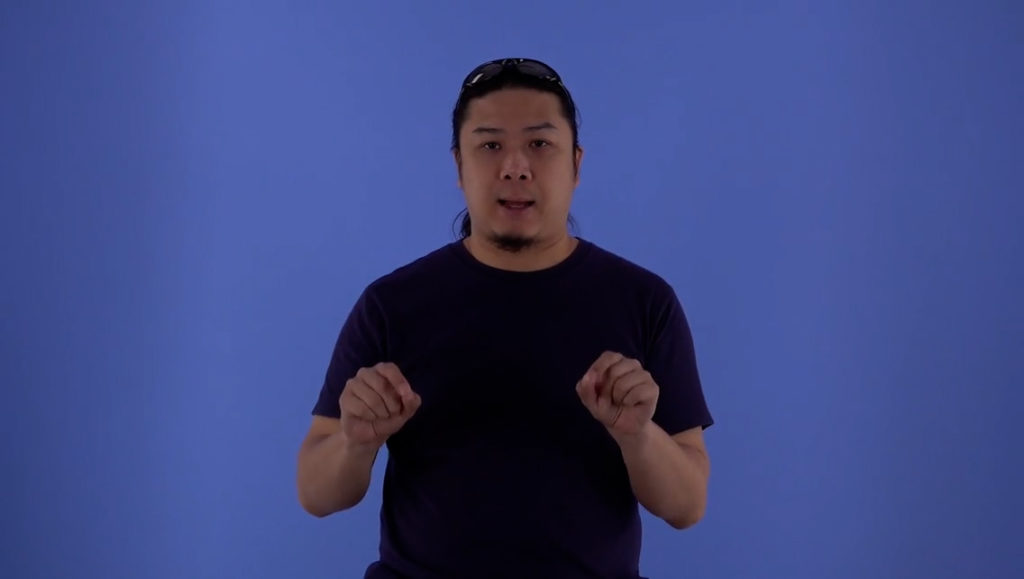
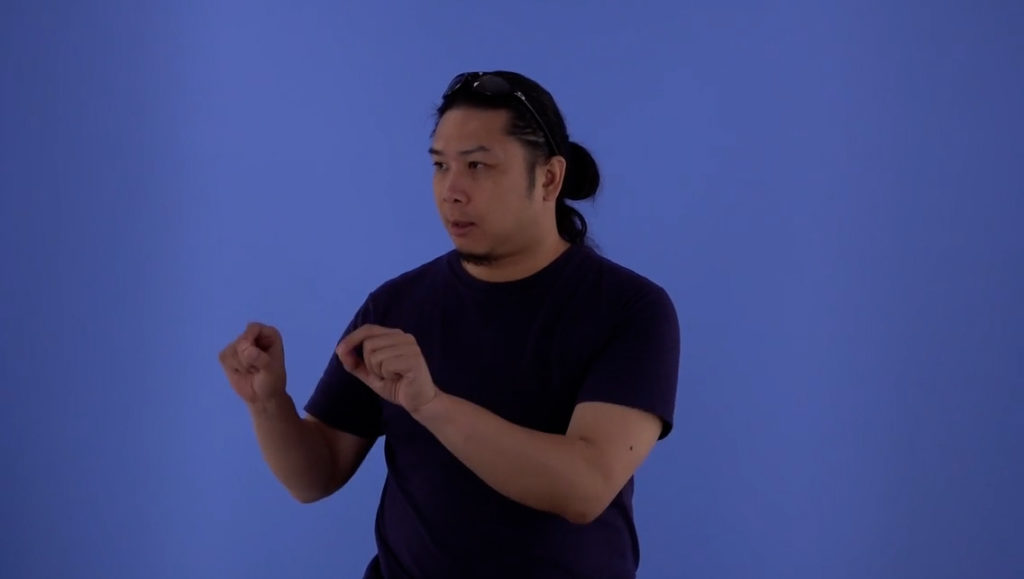
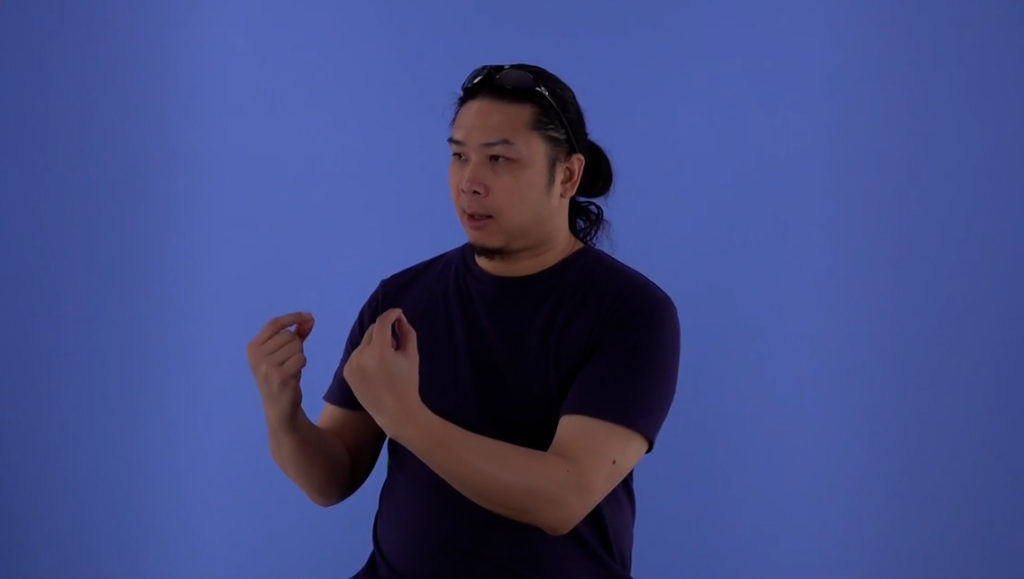
Some agreement verbs indicate verb agreement through a change in both movement direction and palm orientation, as in TELL in HKSL (Figure 8, 9 and 10)
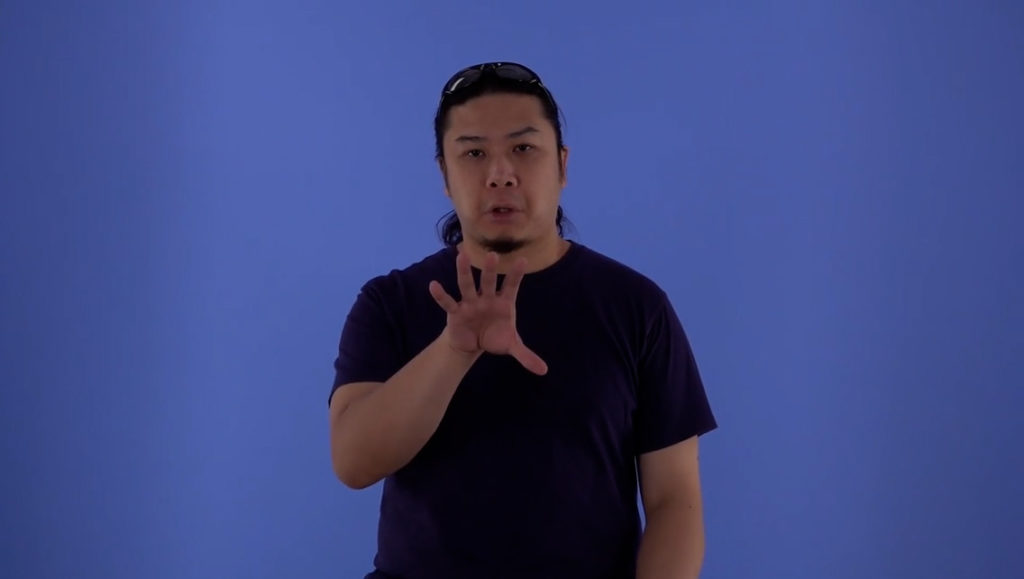
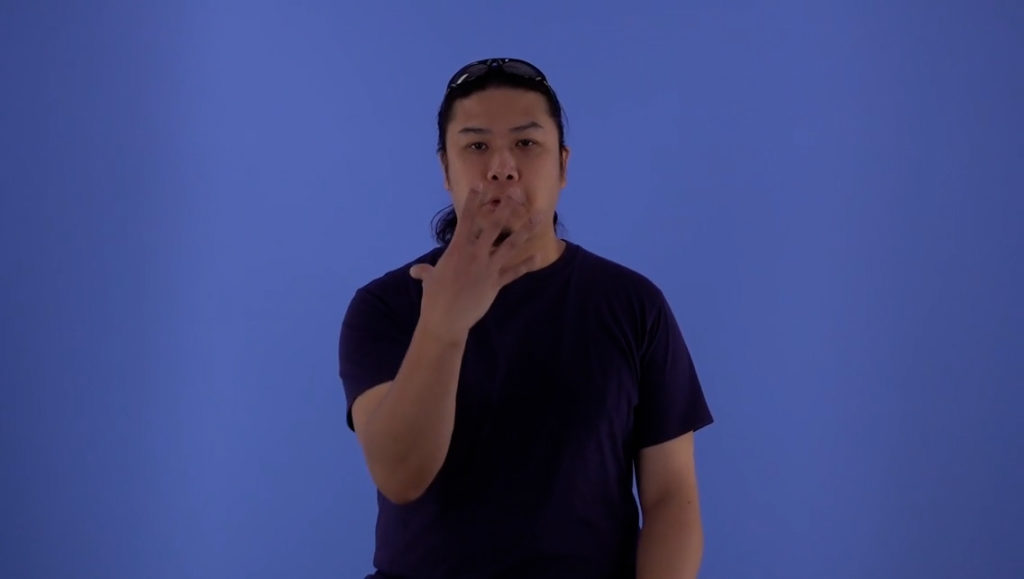
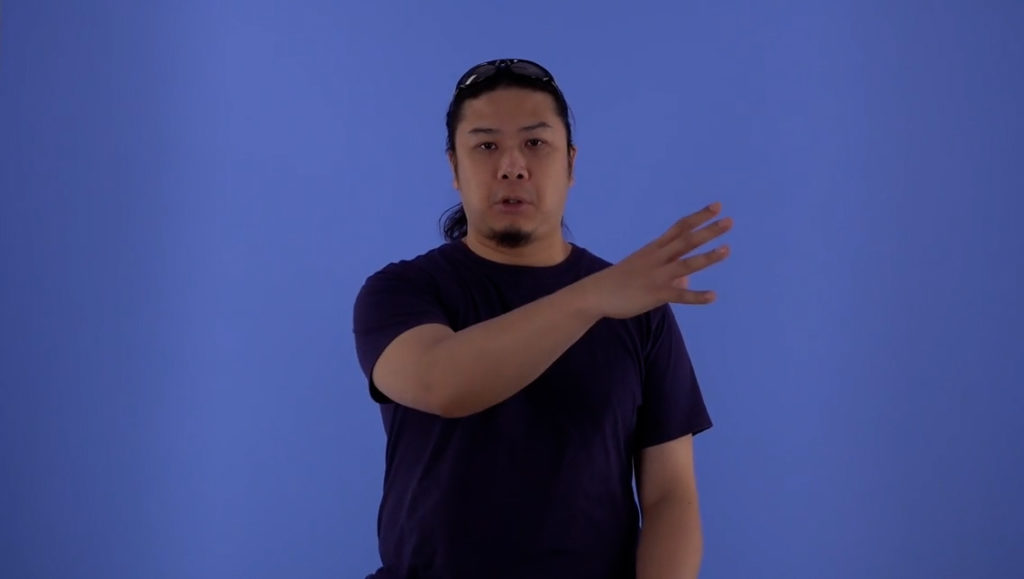
In the examples of GIVE and TELL discussed above, the movement starts with the assumed location of the subject, and the hand moves towards that of the object. Most agreement verbs manifest this kind of movement pattern. However, there is a small class of agreement verbs that have the reversed movement direction. Figure 11 is the citation form of INVITE. Figure 12 is ‘I invite him/her’. The verb begins at the location of the 3rd person object, and moves towards the 1st person subject. In figure 13, the verb begins at the 1st person object, and moves towards the 3rd person subject. This kind of agreement verbs is known as ‘backward verbs’.
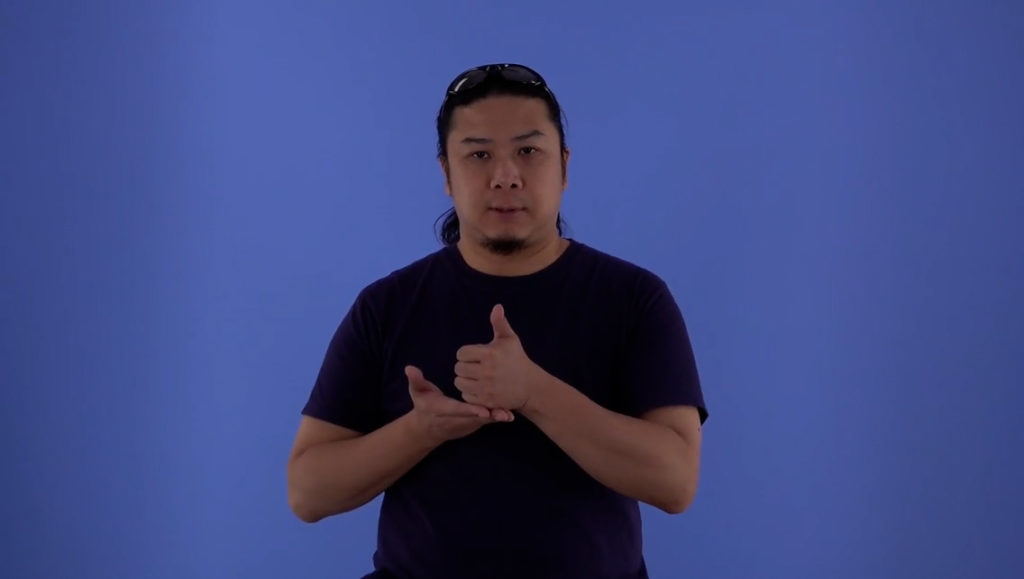
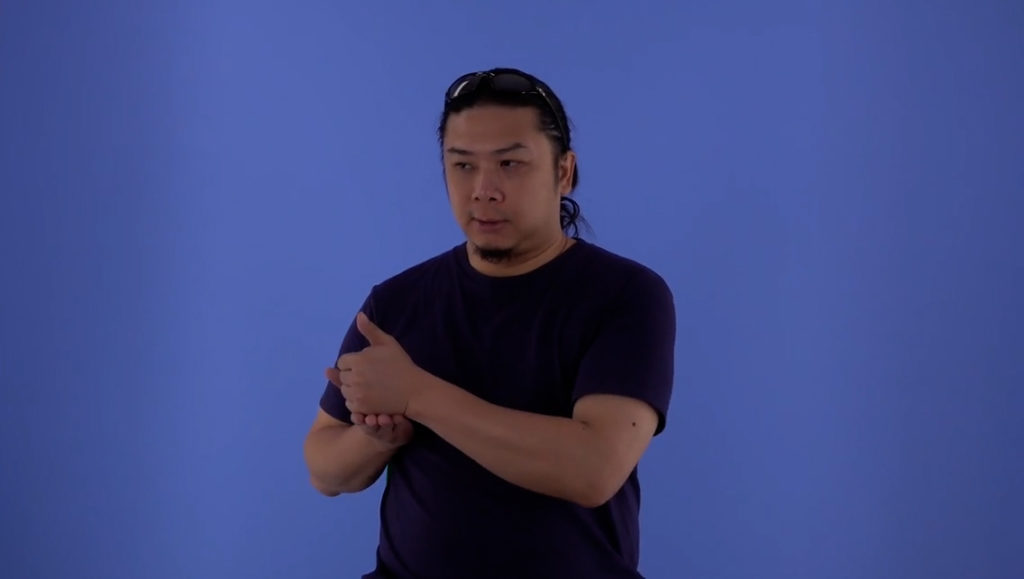
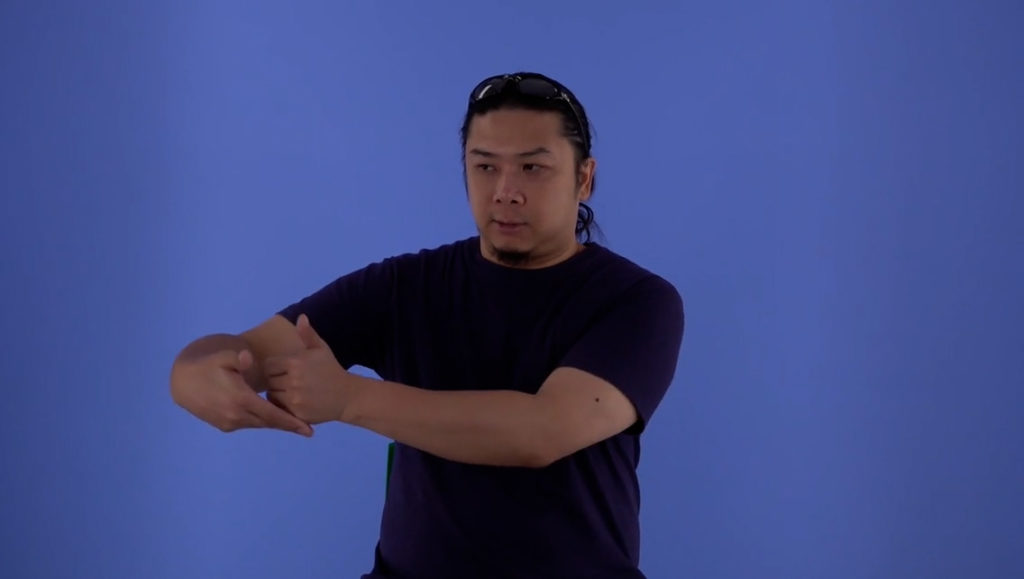
Spatial verbs
Similar to agreement verbs, spatial verbs can be modified spatially. However, spatial verbs indicate locations associated with the beginning and ending positions of a motion verb. WALK (Figure 14, 15), PUT (Figure 16) and PAINT (Figure 17) are examples of spatial verbs in HKSL.
In Figure 14 and 15, WALK is spatially modified to show how the referent moves in the signing space by walking. PUT in Figure 16 shows where the book is placed. Figure 17 shows the locations painted by the man.

‘A man walks from location ‘a’ to location ‘b’.’

‘A woman walks up (the stairs).’

‘A man puts a book at location a.’

‘A man paints location a and location b.’
Plain verbs
The third type of verbs in sign languages is plain verbs. They do not show person or number agreement, do not move through space to indicate grammatical information, and do not take locative affixes. Figure 18 and Figure 19 show two plain verbs (LIKE, REMEMBER) in HKSL.
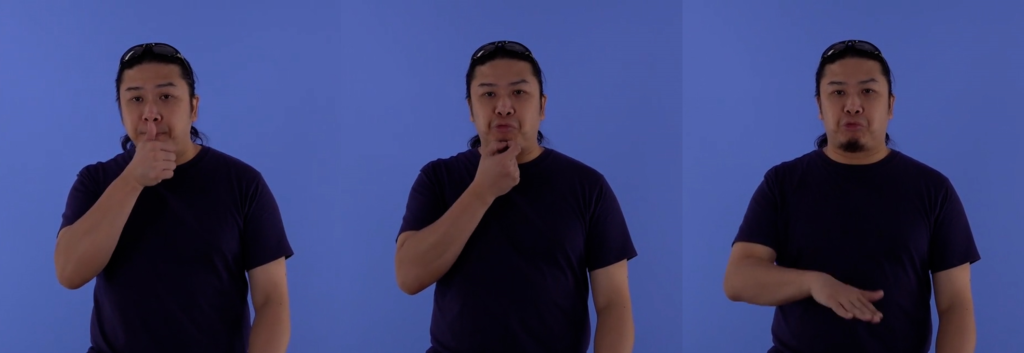
‘Father likes children.’

‘I remember my father’s birthday.’
Both LIKE and REMEMBER are bodily-anchored signs (i.e., articulated on the body), and cannot be spatially modified.
References:
- de Quadros, R. M., & Quer, J. (2008). Back to back(wards) and moving on: On agreement, auxiliaries and verb classes in sign languages. Proceedings of the Theoretical Issues in Sign Language Research Conference, 9, 530-551.
- Padden, C. A. (1988). Interaction of morphology and syntax in American Sign Language. Routledge.
- Pfau, R., Steinbach, M., & Woll, B. (2012). Sign Language: An international handbook. De Gruyter Mouton.
![]()
